What is intermittent fasting?
Intermittent fasting is a broad term for alternating periods of eating and fasting. Instead of focusing on specific foods, following an intermittent fasting schedule focuses on the timeframes for when calories will be consumed. As a beginner to intermittent fasting, there are several different ways to practice that have different eating time periods but utilize the same principle of time-restricted fasting. The most popular method is the 16:8 approach that allows for 16 hours of fasting with an 8 hour period for eating.
While the research for whether intermittent fasting can provide long-term benefits is still on-going and needs additional support, a systematic review from the College of of Family Physicians of Canada examined the evidence for IF related to reducing obesity and found that weight loss occurred in all trials with no serious adverse side effects, which supports intermittent fasting as one strategy to weight loss. Below are additional health benefits from preliminary studies linked to intermittent fasting:
Benefits of Intermittent Fasting:
![intermittent fasting benefits]() Decreases Inflammation
Decreases Inflammation
Improved Glucose Control and Insulin Sensitivity
Increase Levels of Human Growth Hormone
Weight Loss
Foods to Eat and Foods to Avoid
Even though intermittent fasting is focused less on the specific foods consumed and more about the eating timeframes, it’s still always a good idea to make sure that the foods you are eating contain a balanced mix of both macronutrients and micronutrients.
Healthy options such as CHOMPS meat snacks are low-sugar, high protein choices that work for a variety of dietary preferences. Studies show that consuming foods high in protein may help reduce levels of the hunger hormone ghrelin and help you feel fuller faster. One-serving of the CHOMPS Beef Stick provides 10-grams of protein and zero grams of sugar.
Overall, the recommended foods during intermittent fasting are the same foods recommended to support general health: fruits, vegetables, nuts and seeds, and high-quality lean protein sources can be beneficial to any healthy lifestyle. Prioritizing whole foods and limiting items with added sugars is generally a good guideline to follow as a way to optimize a diverse nutrient intake.
Risks to Intermittent Fasting:
Many of the studies conducted about intermittent fasting only provide details about short-term results, therefore it is difficult to gather data on the efficacy of intermittent fasting in the long term. In addition, there’s no study that determines the ideal intermittent fasting regimen that provides information such as the minimum total number of weekly fasting days or the minimum amount of fasting time per period to get any potential benefits.
Here are some of the most common risks associated with intermittent fasting:
- Headaches
- Lack of energy
- Dizziness
- Hunger pangs
- Changes in GI such as constipation
- Changes to hormones that affect appetite
Since individual nutrition needs will differ, intermittent fasting is generally not recommended for people with diabetes, children/teens, individuals with a history of an eating disorder or disordered eating, women who are pregnant or breastfeeding, and individuals who are at risk for nutrient deficiencies. It’s best to consult with your primary care doctor prior to beginning intermittent fasting, especially if you are currently taking any medications that may need to be adjusted.
Beginner Tips for Intermittent Fasting:
Intermittent fasting can be done several different ways. The most common form of intermittent fasting is the 16:8 approach, which means fasting for a period of 16 hours and allowing an 8 hour window for eating meals. This is the most popular because it’s the simplest, easiest method and you are free to choose your own timeframe for eating based on what works for your schedule, For example, if you finish dinner early, go to bed, and have lunch as the first meal of the day, it provides a similar structure to the 16:8 timeframe for this method but you can adjust to the optimal times for you. It’s best to start at a slow pace and slowly reduce the window time for eating and increase the period for fasting, spaced out over several months. The best strategy will always be the one that you can maintain and sustain!
Common Questions About Intermittent Fasting:
Do I need breakfast in the morning to boost my metabolism?
Studies have shown that there are no differences in calories burned between people who eat breakfast and people who skip breakfast within a 24-hour timeframe. The type and total amount of food you consume is still the most important factor in relation to metabolism. If you are hungry and enjoy breakfast, then it’s totally fine to opt-in for a meal but if you’re not as hungry in the morning, you also have the option of waiting until you are.
Do liquids count during fasts?
Fasting generally means no solid foods or beverages that have calories and carbohydrates. Therefore, water is allowed and liquids such as coffee and water that have zero or five calories and less per serving are allowed.
What foods can I consume?
Again, intermittent fasting should be a tool used to improve overall healthy habits. While you’re free to eat whatever you like, focusing on whole foods such as fruits, vegetables, healthy fats from nuts and seeds, and lean proteins all while minimizing added sugars will help support a healthy lifestyle overall.
Conclusion:
Because there’s no one-size-fits all to nutrition and wellness, intermittent fasting should be viewed as just one of the many strategies that can be used to support overall health. Other factors such as sleep, proper nutrition, and exercise are all tools used in combination to create a lifestyle that works for you. At the end of the day, the best lifestyle and eating pattern for you will always be the one you can maintain. Focusing on nutritious food options such as CHOMPS meat snacks is still a great way to maintain and sustain any healthy lifestyle. Check out all of the flavor options CHOMPS offers to fit your dietary preferences!


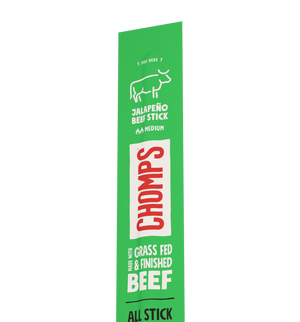
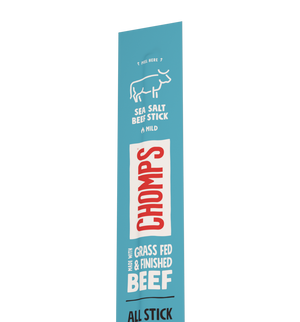


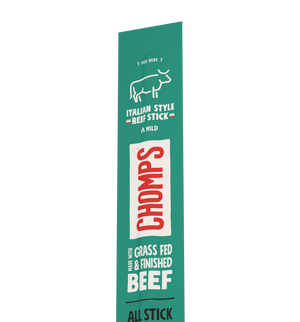




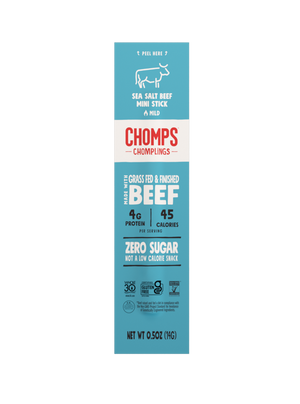

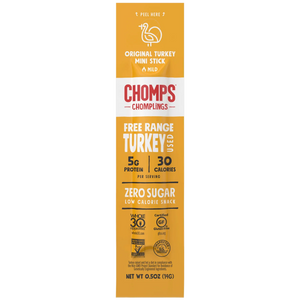









 Decreases Inflammation
Decreases Inflammation








